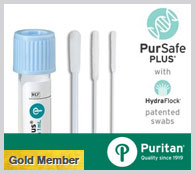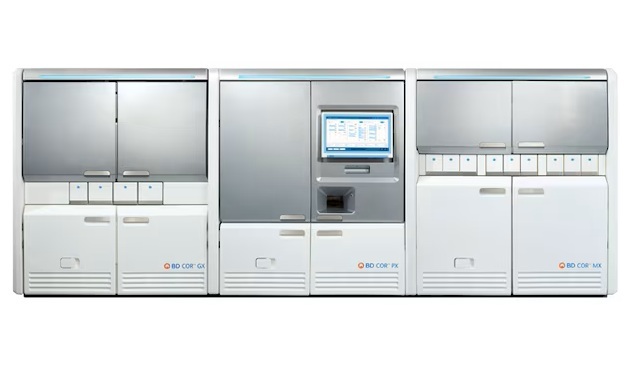Criteria Established for Western Blot Diagnosis of Lyme Disease
By LabMedica International staff writers
Posted on 20 Sep 2011
The laboratory diagnosis of Lyme borreliosis (LB) has been dependent mainly on serology with the Western blot test used for confirmation.Posted on 20 Sep 2011
To ensure the best use of the Western blot in a routine diagnostic laboratory it is essential that the entire interpretation process remains as simple as possible as a consensus for the interpretation of Western blots to detect Borrelia burgdorferi infection in Europe has been difficult to obtain.
Scientists at the UK National Lyme Borreliosis Testing Service Laboratory, at Raigmore Hospital (Inverness, Scotland) endeavored to interpret what bands are classed as specific, the number of bands needed for a positive result, the role of band intensity combined with clinical information. In 2008, 3,688 patients (4,223 serum samples) were tested by enzyme immunoassay (EIA), with 832 patients tested by confirmatory in-house immunoglobulin IgG Western blot. For a Western blot-positive result, these criteria required at least four bands in total, including the 41 kDa band and a further two specific bands with strong intensity. They found that 272 patients were Western blot-positive, 170 were weak positive, 156 were equivocal, and 234 were negative.
All sera were screened by commercial B. burgdorferi IgM/IgG EIA utilizing B. burgdorferi (B31 strain) antigen produced by Zeus Scientific, (Branchburg, NJ, USA) and the accurate identification of band molecular weight was routinely determined using polyclonal sera obtained from Abcam (Cambridge, UK) and well-categorized Western blot-positive sera. A new interpretation criteria and a testing algorithm were then developed. The revised criteria changed the results in 109/3,688 (3%) patients and produced significantly more Western blot-positive and weak-positive patients than with the current criteria. In total, 76 patients who were negative or equivocal became positive, which may have led to a change in their management. Conversely, 33 patients who were weak-positive became equivocal, but their management may not have been affected.
The most important specific Western blot bands appear to be 20 kDa, 28 kDa, 41 kDa, and 48 kDa, but other maybe as significant. The authors concluded that the revised criteria have simplified blot interpretation and improved the sensitivity and robustness of their Western blot method. Using a protocol tailored to patients that incorporates clinical characteristics means that the entire process will be easier and will aid the management of patients. The study was accepted for publication on August 27, 2011, in the British Journal of Biomedical Science.
Related Links:
UK National Lyme Borreliosis Testing Service
Zeus Scientific
Abcam









 Analyzer.jpg)




